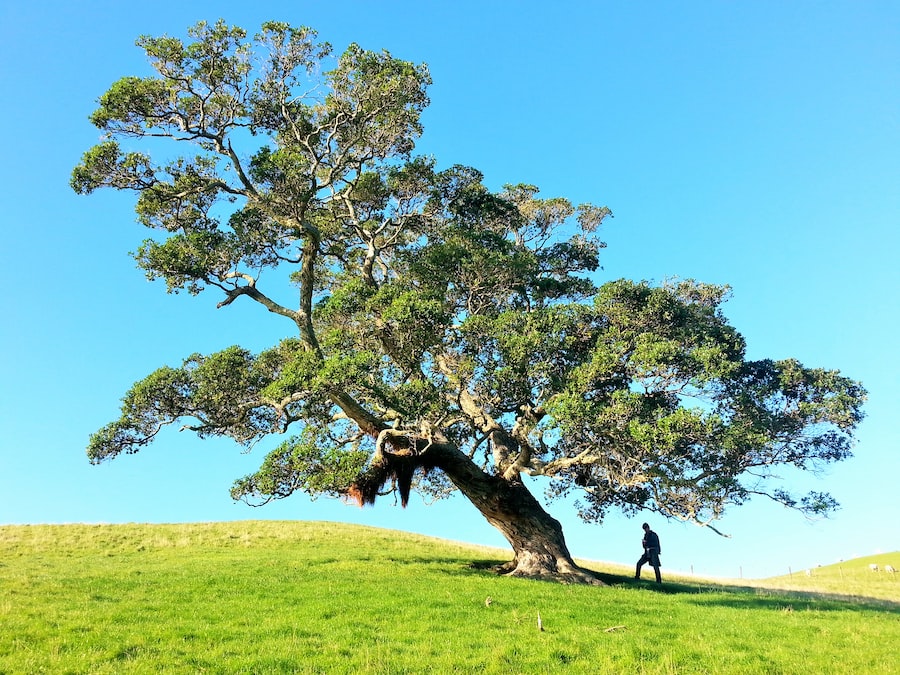From Seed to Fruit: A Guide on How to Grow a Plum Tree

Plum trees are a popular choice for home gardeners and orchard owners alike. They not only provide delicious and nutritious fruits but also add beauty to the landscape with their delicate blossoms in the spring. Plum trees are relatively easy to grow and can thrive in a variety of climates, making them a versatile choice for many gardeners.
One of the main benefits of growing plum trees is the abundance of fresh, juicy fruits they produce. Plums are packed with vitamins, minerals, and antioxidants, making them a healthy addition to any diet. They can be eaten fresh, used in cooking and baking, or preserved for later use. Additionally, plum trees are known for their beautiful flowers, which attract pollinators such as bees and butterflies to the garden.
Growing plum trees is not only beneficial for the individual gardener but also for the environment. Plum trees, like all fruit-bearing trees, contribute to the overall health of the ecosystem by providing food and habitat for wildlife. They also help improve air quality by absorbing carbon dioxide and releasing oxygen through photosynthesis.
Key Takeaways
- Growing plum trees requires careful selection of the right variety and proper soil preparation.
- Planting plum trees involves following a step-by-step guide and providing adequate watering and fertilization.
- Pruning is essential for optimal growth and pest and disease management is important for healthy trees.
- Harvesting and storing plum fruits should be done at the right time and in the right way.
- Successful plum tree growing requires attention to common problems and solutions.
Choosing the Right Plum Tree Variety
When it comes to choosing a plum tree variety, there are several factors to consider. First and foremost, you need to determine your climate zone and choose a variety that is suitable for your region. Plum trees have different chilling requirements, which is the number of hours of cold temperatures they need in order to set fruit. It’s important to choose a variety that matches your climate zone to ensure successful fruit production.
Another factor to consider is the size of the tree. Plum trees come in various sizes, ranging from dwarf varieties that are suitable for small gardens or containers to standard-sized trees that can reach heights of 20 feet or more. Consider the available space in your garden and choose a variety that fits well within that space.
Lastly, consider the flavor and characteristics of the plum variety you are interested in. Some plum varieties are sweet and juicy, while others are tart and firm. Some varieties are better for eating fresh, while others are more suitable for cooking or canning. Research the different plum varieties available and choose one that suits your taste preferences and intended use.
Some popular plum tree varieties include ‘Santa Rosa’, which is known for its sweet and juicy fruits; ‘Stanley’, a European variety that is excellent for cooking and canning; and ‘Methley’, a Japanese variety that produces large, red plums with a sweet flavor.
Preparing the Soil for Plum Tree Planting
Before planting plum trees, it’s important to prepare the soil properly to ensure optimal growth and fruit production. Plum trees prefer well-draining soil that is rich in organic matter. They also require a slightly acidic soil pH, ideally between 6.0 and 6.5.
To determine the pH of your soil, you can perform a soil test using a home testing kit or by sending a sample to a local agricultural extension office. If the pH of your soil is too high, meaning it is alkaline, you can lower it by adding sulfur or peat moss to the soil. If the pH is too low, meaning it is acidic, you can raise it by adding lime.
In addition to adjusting the pH, it’s also important to improve the soil structure by adding organic matter such as compost or well-rotted manure. This will help improve drainage and provide essential nutrients for the plum tree’s growth.
Planting Plum Trees: Step-by-Step Guide
| Step | Description |
|---|---|
| 1 | Choose a planting location with well-draining soil and full sun exposure. |
| 2 | Dig a hole that is twice as wide and deep as the root ball of the plum tree. |
| 3 | Remove the plum tree from its container and gently loosen the roots. |
| 4 | Place the plum tree in the center of the hole and backfill with soil, tamping down gently as you go. |
| 5 | Water the plum tree thoroughly and add a layer of mulch around the base to retain moisture. |
| 6 | Prune any damaged or diseased branches and shape the tree as desired. |
| 7 | Fertilize the plum tree in the spring and summer with a balanced fertilizer. |
| 8 | Harvest ripe plums in late summer or early fall. |
The best time to plant plum trees is in the early spring or late fall when the weather is cool and the tree is dormant. Here is a step-by-step guide to planting plum trees:
1. Choose a sunny location in your garden with well-draining soil.
2. Dig a hole that is twice as wide and deep as the root ball of the tree.
3. Gently remove the tree from its container or packaging, being careful not to damage the roots.
4. Place the tree in the hole, making sure that the bud union (the swollen area where the tree was grafted onto the rootstock) is above ground level.
5. Backfill the hole with soil, firming it gently around the roots to eliminate air pockets.
6. Water the tree thoroughly after planting to settle the soil and provide moisture to the roots.
7. Mulch around the base of the tree with a layer of organic mulch, such as wood chips or straw, to help conserve moisture and suppress weeds.
Watering and Fertilizing Plum Trees
Proper watering is essential for the health and growth of plum trees. Newly planted trees should be watered deeply and regularly to help establish their root systems. After the first year, plum trees generally require about 1 inch of water per week during the growing season.
To determine when to water, check the soil moisture by sticking your finger into the soil about 2 inches deep. If it feels dry at that depth, it’s time to water. Avoid overwatering, as this can lead to root rot and other problems.
In terms of fertilizing plum trees, it’s important to provide them with a balanced fertilizer that contains nitrogen, phosphorus, and potassium. The best time to fertilize plum trees is in early spring before new growth begins. Apply a slow-release fertilizer according to the package instructions, taking care not to over-fertilize.
Pruning Plum Trees for Optimal Growth

Pruning is an important aspect of plum tree care that helps promote optimal growth and fruit production. Pruning helps maintain the shape and size of the tree, improves air circulation and sunlight penetration, and removes dead or diseased branches.
The best time to prune plum trees is in late winter or early spring before new growth begins. Start by removing any dead, damaged, or crossing branches. Then, thin out the interior of the tree to improve air circulation and sunlight penetration. Finally, prune back any long or leggy branches to maintain the desired shape and size of the tree.
When pruning plum trees, it’s important to use sharp, clean pruning tools to prevent the spread of disease. Make clean cuts just above a bud or lateral branch, angling the cut away from the bud to promote outward growth.
Pest and Disease Management for Plum Trees
Plum trees are susceptible to a variety of pests and diseases that can affect their health and fruit production. Some common pests that attack plum trees include aphids, plum curculio, and peach tree borer. These pests can cause damage to the leaves, flowers, and fruits of the tree.
To manage pests, it’s important to monitor your plum trees regularly for signs of infestation. If you notice any pests, you can try using organic pest control methods such as insecticidal soap or neem oil. In severe cases, you may need to use chemical pesticides, but be sure to follow the instructions carefully and use them sparingly.
In terms of diseases, plum trees can be affected by fungal infections such as brown rot and plum pox virus. To prevent these diseases, it’s important to practice good sanitation by removing fallen leaves and fruits from around the tree. You can also apply fungicides as a preventive measure, especially during periods of high humidity or rainfall.
Harvesting and Storing Plum Fruits
Plum fruits are typically ready for harvest in late summer or early fall, depending on the variety and climate. The best way to determine if a plum is ripe is by gently squeezing it. If it gives slightly under pressure and feels soft but not mushy, it is ready to be picked.
To harvest plums, simply twist or gently pull the fruit from the tree. Be careful not to damage the branches or buds while harvesting. It’s best to harvest plums in the morning when they are cool and firm.
After harvesting, plums can be stored at room temperature for a few days to ripen further. Once they are fully ripe, they can be stored in the refrigerator for up to a week. Plums can also be preserved by canning, freezing, or making them into jams and jellies.
Common Problems and Solutions in Growing Plum Trees
While growing plum trees can be a rewarding experience, there are some common problems that gardeners may encounter. One common problem is poor fruit set, which can be caused by factors such as inadequate pollination, extreme temperatures, or nutrient deficiencies. To improve fruit set, you can try hand-pollinating the flowers using a small brush or planting additional pollinator-friendly plants nearby.
Another common problem is fruit drop, where the tree drops immature fruits before they have a chance to ripen. This can be caused by factors such as water stress, nutrient deficiencies, or pest infestations. To prevent fruit drop, make sure your plum tree is receiving adequate water and nutrients, and monitor it regularly for signs of pests or diseases.
Other problems that plum tree growers may face include leaf curl, which is a fungal disease that causes distorted and curled leaves; black knot, which is a fungal disease that causes black growths on branches; and bacterial canker, which causes sunken areas on the trunk or branches. These problems can be managed through proper sanitation, pruning infected branches, and applying appropriate fungicides or bactericides.
Tips for Successful Plum Tree Growing
In conclusion, growing plum trees can be a rewarding and enjoyable experience. By choosing the right variety, preparing the soil properly, providing adequate water and nutrients, and practicing good pruning and pest management techniques, you can ensure the health and productivity of your plum trees.
Some additional tips for successful plum tree growing include:
– Plant multiple plum tree varieties to ensure cross-pollination and improve fruit set.
– Provide a trellis or support system for larger plum tree varieties to prevent branches from breaking under the weight of the fruit.
– Monitor your plum trees regularly for signs of pests or diseases and take appropriate action if necessary.
– Practice good sanitation by removing fallen leaves and fruits from around the tree to prevent the spread of pests and diseases.
– Enjoy the fruits of your labor by harvesting plums at their peak ripeness and storing them properly for later use.
By following these tips and guidelines, you can enjoy a bountiful harvest of delicious plums from your own backyard. Happy plum tree growing!



